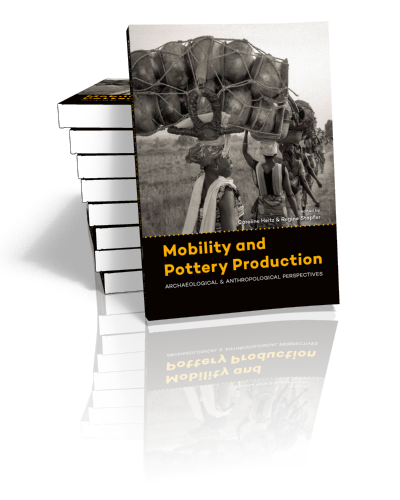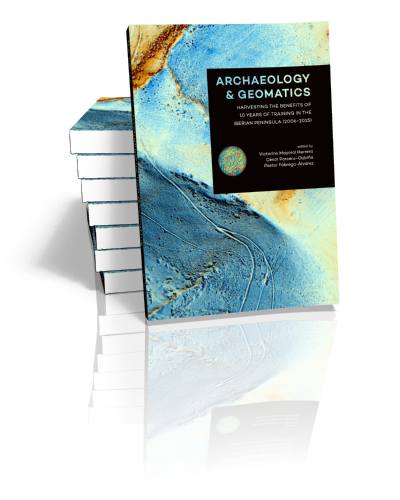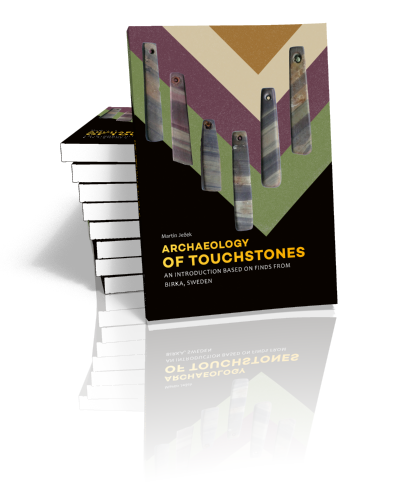The urban graveyard
Archaeological perspectives
Edited by Roos van Oosten, Rachel Schats, Kerry Fast, Nico Arts & Jeroen Bouwmeester | 2018
It is commonly believed that in medieval and post-medieval towns and cities death outnumbered births and that these urban centres could only survive through the influx of migrants; a concept which has come to be…
Mobility and Pottery Production
Archaeological and Anthropological Perspectives
Edited by Caroline Heitz & Regine Stapfer | 2017
For many past and present societies, pottery forms an integral part of material culture and everyday practice. This makes it a promising case example to address human-thing-relations on a more general level, as well as…
Archaeology and Geomatics
Harvesting the benefits of 10 years of training in the Iberian Peninsula (2006-2015)
Edited by Victorino Mayoral Herrera, César Parcero-Oubiña & Pastor Fábrega-Álvarez | 2017
Digital technologies have numerous applications in archaeology ranging from the documentation of the archaeological evidence and the analysis of research data to the presentation of results for a wider audience. This volume consists of various…
Archaeology of Touchstones
An introduction based on finds from Birka, Sweden
Martin Ježek | 2017
Did ancient Europeans truly believe in an active after-life, as modern Europeans would like to think they did? What purpose did grave-goods actually serve? Are archaeology and the historical sciences in general able to shed,…
De stad en de dood
Archeologische perspectieven
Onder redactie van Roos van Oosten, Rachel Schats, Nico Arts & Jeroen Bouwmeester | 2017
Het is een wijdverbreid idee dat (post-)middeleeuwse steden een sterfteoverschot hadden en zij slechts in leven konden blijven door de toestroom van migranten; een fenomeen dat bekend staat als het ‘urban graveyard’-effect. Over details valt…
Fragmenting the Chieftain
A practice-based study of Early Iron Age Hallstatt C elite burials in the Low Countries
Sasja van der Vaart-Verschoof | 2017
There is a cluster of Early Iron Age (800–500 BC) elite burials in the Low Countries in which bronze vessels, weaponry, horse-gear and wagons were interred as grave goods. Mostly imports from Central Europe, these…
Fragmenting the Chieftain – Catalogue
Late Bronze and Early Iron Age elite burials in the Low Countries
Sasja van der Vaart-Verschoof | 2017
There is a cluster of Early Iron Age (800–500 BC) elite burials in the Low Countries in which bronze vessels, weaponry, horse-gear and wagons were interred as grave goods. Mostly imports from Central Europe, these…
Search results for cat-method-theory
:
The urban graveyard
Archaeological perspectives
Edited by Roos van Oosten, Rachel Schats, Kerry Fast, Nico Arts & Jeroen Bouwmeester | 2018
It is commonly believed that in medieval and post-medieval towns and cities death outnumbered births and that these urban centres could only survive through the influx of migrants; a concept which has come to be…
Mobility and Pottery Production
Archaeological and Anthropological Perspectives
Edited by Caroline Heitz & Regine Stapfer | 2017
For many past and present societies, pottery forms an integral part of material culture and everyday practice. This makes it a promising case example to address human-thing-relations on a more general level, as well as…
Archaeology and Geomatics
Harvesting the benefits of 10 years of training in the Iberian Peninsula (2006-2015)
Edited by Victorino Mayoral Herrera, César Parcero-Oubiña & Pastor Fábrega-Álvarez | 2017
Digital technologies have numerous applications in archaeology ranging from the documentation of the archaeological evidence and the analysis of research data to the presentation of results for a wider audience. This volume consists of various…
Archaeology of Touchstones
An introduction based on finds from Birka, Sweden
Martin Ježek | 2017
Did ancient Europeans truly believe in an active after-life, as modern Europeans would like to think they did? What purpose did grave-goods actually serve? Are archaeology and the historical sciences in general able to shed,…
De stad en de dood
Archeologische perspectieven
Onder redactie van Roos van Oosten, Rachel Schats, Nico Arts & Jeroen Bouwmeester | 2017
Het is een wijdverbreid idee dat (post-)middeleeuwse steden een sterfteoverschot hadden en zij slechts in leven konden blijven door de toestroom van migranten; een fenomeen dat bekend staat als het ‘urban graveyard’-effect. Over details valt…
Fragmenting the Chieftain
A practice-based study of Early Iron Age Hallstatt C elite burials in the Low Countries
Sasja van der Vaart-Verschoof | 2017
There is a cluster of Early Iron Age (800–500 BC) elite burials in the Low Countries in which bronze vessels, weaponry, horse-gear and wagons were interred as grave goods. Mostly imports from Central Europe, these…
Fragmenting the Chieftain – Catalogue
Late Bronze and Early Iron Age elite burials in the Low Countries
Sasja van der Vaart-Verschoof | 2017
There is a cluster of Early Iron Age (800–500 BC) elite burials in the Low Countries in which bronze vessels, weaponry, horse-gear and wagons were interred as grave goods. Mostly imports from Central Europe, these…
Browse by subject












